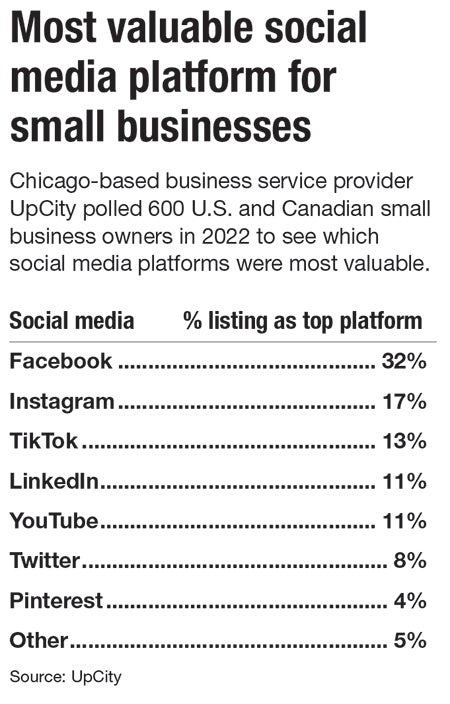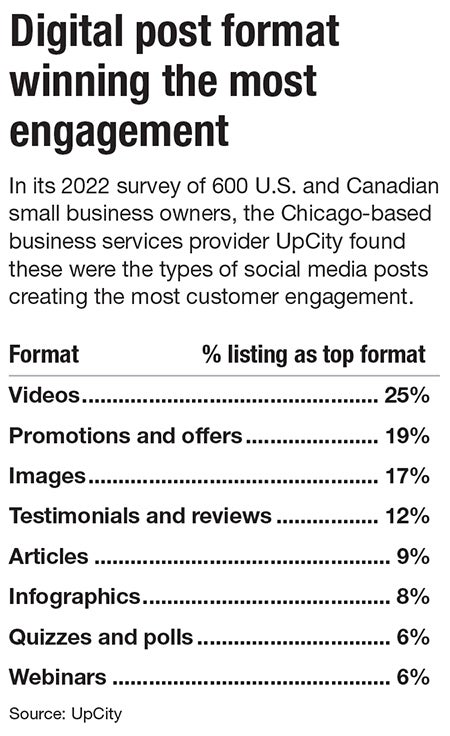Some companies may be trying to reach potential customers and convert clicks to sales, while others want to show off their company culture to people who might consider applying for a job.
Get Instant Access to This Article
Subscribe to Worcester Business Journal and get immediate access to all of our subscriber-only content and much more.
- Critical Central Massachusetts business news updated daily.
- Immediate access to all subscriber-only content on our website.
- Bi-weekly print or digital editions of our award-winning publication.
- Special bonus issues like the WBJ Book of Lists.
- Exclusive ticket prize draws for our in-person events.
Click here to purchase a paywall bypass link for this article.
When Elon Musk, the new owner of social media giant Twitter, took over the company this fall, he eliminated more than half of the company’s employees and sought to change its moderation policies. In response, many companies stopped advertising or posting on the site. Among them was Vision Advertising of Northborough.
Vision previously posted content to Twitter daily, along with the other major social media sites, said Communications Manager Catrina Gardner.

“We have paused our posting on Twitter,” Gardner said in late November. “No one’s really manning the fort at Twitter. We don’t really know who’s got access to things and who’s paying attention to what’s getting posted.”
The dust-up at Twitter is just one example of the fast-changing social media environment. As some platforms rise and others fall, and as available features and popular trends shift, it can be hard for businesses to stay on top of their social media strategies. But Central Massachusetts advertising and marketing firms have advice about how to take advantage of what social media has to offer.
“I always tell clients that consistency is really key,” said Brittany Wong, CEO of Worcester marketing agency Studio Jade.


Develop a social strategy
Companies looking to take better advantage of social media should begin by creating a plan, starting with a firm idea of their goals, said Wong and Gardner.
Some companies may be trying to reach potential customers and convert clicks to sales, while others want to show off their company culture to people who might consider applying for a job. Then, it’s possible to figure out what sort of content makes sense, whether it’s testimonials, information about new products, or peeks behind the scenes. Companies can make use of scheduling tools so their account consistently posts the right mix of content each day.

Emma Pagano, strategic director of Worcester digital marketing agency Pagano Media, points to the example of UPS, which keeps up an active presence on several social media platforms to build the shipping company’s brand reputation.
“UPS shares captivating photos of delivery trucks in scenic locations and spotlights delivery employees through video,” Pagano wrote in an email. “They even respond directly to customers in the comments section when asked about the status of packages!”
Another big question is which social media platform or platforms to use. Some small businesses fall into the trap of jumping on an app that they’ve heard is hot right now, Gardner said.
“Yes, you can go viral on TikTok, but if you spread yourself too thin, then you’re not going to stick to any strategy,” she said. “Instead of being everywhere at once, my suggestion is focus on one social media platform to start out.”
But which platform? That depends on a company’s goals. LinkedIn is a great choice for many B2B firms, while customer-focused brands are more likely to use Instagram and Facebook, for both sales and employee recruitment, Pagano said.
“With day-in-the-life Instagram stories hosted by employees, or photography of office culture, and employee-event updates, Instagram provides companies more room for human connection,” she said.
Facebook remains a valuable platform for many companies, partly because so many people use it. Gardner said another advantage of that network is it offers features like events and local groups, which provide an easy way to reach an audience in a particular location.
“If you are someone that has a brick-and-mortar that offers services in a local area, you know that you’re finding your target area that way,” she said.
Best practices on social media
To some businesses, one of the major advantages of social media over other ways of reaching customers is that posting is free. But, if time is money, it’s still important to consider how much effort to put into it. Gardner maps out three resources businesses have: time, money, and expertise.

“If you don’t have money but have a lot of time, because you’re just starting out, you may do it on your own,” she said.
But, she said, as a business grows, it may make sense to either hire someone to run the social media accounts or outsource the work to a specialty firm. Similarly, business owners and managers should consider whether they have the expertise to use social media well. For example, do they know how to make effective graphics for a particular network? If not, do they want to learn how, or might it be best to hire someone else?
Another important question is whether, or how, to use paid advertising on social media. In general, this kind of advertising is far less expensive than running ads in traditional media or forms like billboards. Wong said advertising, or boosting posts, even for as little as $5 or $10, can get information in front of a particular audience. For example, a company could specifically boost a Facebook post about an upcoming event to target business owners in Worcester.
When companies launch a social media campaign, they should focus on the creative content and the call to action, Pagano said.
A/B testing can help determine which image, video, or other material wins the most clicks, after which a company can use its budget to get more eyeballs on it. And a strong call to action can turn clicks into something valuable for the company, such as sales leads.
While social media can be a huge asset for companies, it has its risks. Among these is employees posting content not reflecting well on their employer. Companies should have clear social media guidelines and communicate them to workers, Wong said.
“The biggest issue is people don’t know,” she said.
Vision is fine with employees posting political content on their own accounts, even though Vision Advertising itself stays politically neutral. But, Gardner said, if an employee is posting offensive content, even on their own time, it can reflect badly on their employer.
“There can definitely be times when something’s going to come back and bite your company,” she said.
But, she said, the best way to address this isn’t necessarily making rules about what it’s acceptable to post. Vision focuses more on ensuring the people it hires are aligned with the company’s values.
That not only helps ensure they won’t post anything offensive customers might see but helps promote a harmonious relationship with coworkers.
Happy employees posting what they like about their jobs are a big asset from a public relations standpoint, Gardner said.
“Your staff can be great ambassadors for your brand if they love what they do,” she said.

